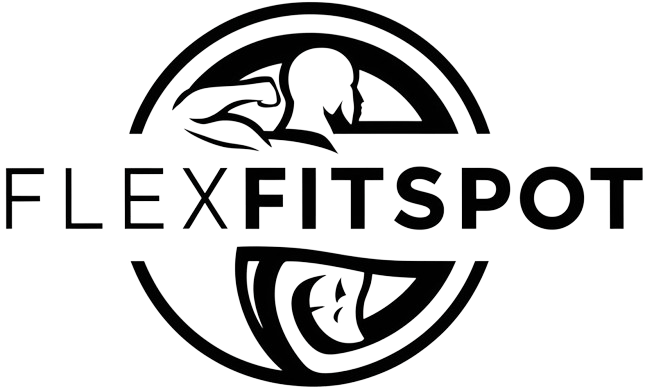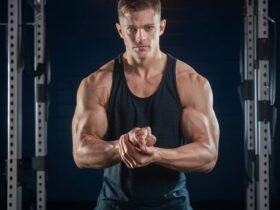Introduction to Calisthenics Body vs. Gym Body
The ongoing debate between calisthenics and gym workouts has become a focal point within the fitness community, captivating enthusiasts and professionals alike. Calisthenics, derived from the Greek words “kallos” (beauty) and “sthenos” (strength), refers to exercises that rely on a person’s body weight for resistance. These exercises include push-ups, pull-ups, and squats, emphasizing functional strength and flexibility. On the other hand, gym workouts typically involve resistance training using equipment such as free weights, machines, and various specialized tools designed to isolate and target specific muscle groups.
Supporters of calisthenics argue that it promotes natural movement patterns, enhances core strength, and can be performed virtually anywhere, making it highly accessible. They highlight the holistic benefits of calisthenics, such as improved balance, coordination, and overall body control. Moreover, it often requires minimal or no equipment, which can be particularly advantageous for those who prefer outdoor workouts or have limited access to a gym.
Conversely, proponents of gym workouts emphasize the ability to progressively overload muscles through controlled resistance, leading to hypertrophy and increased muscular strength. They argue that the structured environment of a gym, along with the variety of equipment available, provides a more comprehensive approach to targeting all muscle groups effectively. Additionally, gym enthusiasts often point out the benefits of a social environment, where one can receive guidance from trainers and the motivation derived from working out alongside others.
This article aims to delve into the benefits, drawbacks, and effective use cases of both calisthenics and gym workouts. By exploring these aspects, we hope to provide a balanced perspective that will help readers determine which approach may be more suitable for their individual fitness goals and lifestyles.
Understanding Calisthenics
Calisthenics, a form of exercise that relies on using one’s own body weight for resistance, has a rich history dating back to ancient Greece. The term itself originates from the Greek words ‘kallos,’ meaning beauty, and ‘sthenos,’ meaning strength. This workout method emphasizes functional strength, flexibility, and balance, making it both effective and versatile.
Fundamental principles of calisthenics revolve around the idea that anyone can perform the exercises with minimal equipment. This accessibility has contributed to its widespread popularity. The core of calisthenics consists of a series of dynamic and static exercises that target multiple muscle groups simultaneously. For instance, push-ups, pull-ups, and bodyweight squats are staple movements that enhance upper body strength, core stability, and lower body power.
Push-ups are a primary exercise that targets the chest, shoulders, and triceps while also engaging the core. Variations such as incline, decline, and diamond push-ups can further diversify the workout, addressing different muscle groups and difficulty levels. Pull-ups are another critical component, focusing on the back, biceps, and forearms. They can be performed using various grips, including overhand, underhand, and neutral, each modifying the muscle engagement. Bodyweight squats, on the other hand, are fundamental for strengthening the quadriceps, hamstrings, and glutes, and can be progressed to pistol squats or jump squats for added intensity.
A notable advantage of calisthenics is its emphasis on functional strength, which translates to improved performance in everyday activities and sports. Flexibility is also a key aspect, with movements designed to enhance the range of motion and joint health. This holistic approach ensures a balanced development of muscle, promoting overall fitness and well-being without the need for heavy weights or machines.
In summary, calisthenics offers a comprehensive, equipment-free workout regime that builds functional strength, flexibility, and endurance. Its focus on using body weight for resistance makes it an adaptable exercise form suitable for all fitness levels, from beginners to advanced athletes.
Understanding Gym Workouts
Gym workouts encompass a broad array of exercises and equipment designed to cater to diverse fitness goals. Typically, a gym is equipped with free weights, resistance machines, and a variety of cardio equipment. These resources allow individuals to customize their workouts according to their specific objectives, whether it’s building muscle, enhancing cardiovascular health, or improving overall strength.
Free weights, such as dumbbells and barbells, are fundamental in gym settings. They offer a versatile approach to strength training, enabling users to perform a range of exercises targeting multiple muscle groups. Free weight exercises are often favored for their ability to engage stabilizing muscles, thereby promoting functional strength and coordination.
Resistance machines, on the other hand, provide a more controlled environment for strength training. These machines guide users through specific movement patterns, reducing the risk of improper form and potential injury. They are particularly beneficial for beginners who may need additional support in executing exercises correctly.
Cardiovascular equipment in the gym typically includes treadmills, stationary bikes, ellipticals, and rowing machines. These machines are essential for those aiming to improve their cardiovascular health, burn calories, and enhance endurance. The variety of cardio options ensures that users can select the equipment that best fits their preferences and fitness levels.
In addition to individual workouts, gyms often offer a plethora of fitness classes. These classes range from high-intensity interval training (HIIT) and spin classes to yoga and Pilates. Group fitness classes provide a structured and social environment, which can be motivating and enjoyable for participants. They also offer the guidance of a professional instructor, ensuring that exercises are performed safely and effectively.
The extensive range of options in a gym setting makes it a versatile and comprehensive environment for achieving various fitness goals. Whether one’s aim is bodybuilding, weight loss, or general health improvement, the gym offers the necessary tools and resources to support these endeavors.
Benefits of Calisthenics
Calisthenics offers numerous advantages that cater to a wide range of fitness enthusiasts. One of the primary benefits is the improvement in functional strength. Unlike traditional weightlifting, which often isolates specific muscle groups, calisthenics engages multiple muscle groups simultaneously, enhancing overall body strength. This approach not only builds muscle but also improves the body’s ability to perform everyday tasks more efficiently.
Another significant benefit is the enhancement of balance and coordination. Calisthenics exercises, such as handstands and single-leg squats, require a high level of body awareness and stability. These movements challenge the neuromuscular system, promoting better balance and coordination, which are crucial for both athletic performance and daily activities.
Flexibility is another area where calisthenics shines. Many exercises involve a full range of motion, which helps lengthen and strengthen muscles. Improved flexibility can reduce the risk of injuries and contribute to better posture and overall mobility. This holistic approach ensures that the body remains agile and adaptable, which is particularly beneficial as one ages.
One of the most appealing aspects of calisthenics is the ability to work out anywhere, without the need for equipment. Whether in a park, at home, or while traveling, individuals can perform a complete workout using just their body weight. This convenience eliminates barriers to consistent exercise, making it accessible for people with busy schedules or limited access to gym facilities.
Moreover, calisthenics emphasizes mastering control over one’s body. Exercises such as pull-ups, push-ups, and dips require a high degree of precision and body control, fostering a strong mind-muscle connection. This focus on natural body movements also translates to a lower risk of injury compared to weightlifting, where improper form or excessive weights can lead to strains and sprains.
In summary, calisthenics offers a comprehensive approach to fitness, enhancing functional strength, balance, coordination, and flexibility, all while providing the convenience of equipment-free workouts and a lower risk of injury. These benefits make it an appealing option for individuals looking to achieve a well-rounded and sustainable fitness routine.
Benefits of Gym Workouts
Gym workouts offer a myriad of advantages, making them a popular choice for fitness enthusiasts. One of the primary benefits is access to a wide variety of equipment, ranging from free weights and resistance machines to cardio equipment like treadmills and stationary bikes. This variety allows individuals to target specific muscle groups more effectively, leading to balanced and well-rounded muscle development.
Another significant advantage of gym workouts is the availability of professional trainers. Certified fitness professionals can provide personalized training plans, correct form, and offer valuable advice on nutrition and recovery. This expert guidance can be particularly beneficial for beginners who may not yet have the knowledge or experience to design an effective workout regimen on their own.
The ability to isolate specific muscle groups is another key benefit of gym workouts. Machines and free weights can be used to focus on individual muscles, which can be particularly useful for bodybuilders or those looking to address specific weaknesses. This level of precision is often harder to achieve with bodyweight exercises alone.
Progressive overload, a fundamental principle for muscle growth, is also more easily managed in a gym setting. Adjustable weights allow for incremental increases in resistance, enabling continuous progress over time. This systematic approach can lead to more significant gains in strength and muscle mass compared to calisthenics, where adding resistance can be more challenging.
Finally, the social aspect of gym workouts should not be underestimated. Being in a gym environment can provide a sense of community and motivation. Group classes, workout partners, and a shared atmosphere of commitment can be incredibly motivating. This communal aspect can help individuals stay consistent with their fitness routines, ultimately leading to better long-term results.
Drawbacks of Calisthenics
While calisthenics offers numerous benefits, it also comes with certain limitations that should be considered. One significant drawback is the difficulty in targeting and isolating specific muscle groups. Unlike gym workouts that provide machines and weights designed for muscle isolation, calisthenics relies heavily on compound movements. This can make it challenging to focus on individual muscles, which may be crucial for achieving certain fitness goals.
Another limitation is the potential plateau in strength gains. As calisthenics primarily uses body weight for resistance, there might come a point where additional progress becomes difficult. Advanced practitioners often have to explore creative ways to increase resistance, such as using weighted vests or progressing to more challenging variations of exercises. This contrasts with gym workouts, where incrementally increasing weights provides a straightforward method for continuous strength development.
For beginners, calisthenics can present a steeper learning curve. Many advanced calisthenics movements, such as muscle-ups or planches, require a high level of skill, strength, and coordination. This can be discouraging for those new to fitness, as the journey to mastering these movements is often long and demanding. In contrast, gym workouts can be more accessible, with equipment and guidance available to ease beginners into their fitness routines.
Lastly, tracking progress in calisthenics can be more challenging compared to gym workouts. In the gym, progress is easily quantified by the amount of weight lifted or the number of repetitions completed. With calisthenics, progress is often less tangible, relying on improved form, increased repetitions, or the ability to perform more advanced movements. This can make it harder for individuals to gauge their improvements and stay motivated over time.
Drawbacks of Gym Workouts
While gym workouts have their benefits, they also come with several drawbacks that can affect one’s fitness journey. One of the most significant disadvantages is the cost of membership. Gym memberships can be expensive, with monthly fees, initiation costs, and additional charges for classes or personal training sessions. For many people, this financial burden can be a considerable barrier to consistent exercise.
Another notable drawback is the need to travel to a gym. This requirement can be inconvenient, especially for individuals with busy schedules. The travel time can add up, and bad weather or transportation issues can further complicate the effort to maintain a regular workout routine. Moreover, the time and effort spent commuting to and from the gym could be better used in other productive activities.
The risk of injury from improper use of gym equipment is another critical concern. Without proper guidance, individuals may use machines incorrectly, leading to strains, sprains, and other injuries. While personal trainers are available, their services often come at an additional cost, which may not be affordable for everyone.
Additionally, there is a potential for over-reliance on machines. While machines can help isolate specific muscle groups, they may not engage the stabilizing muscles as effectively as free weights or bodyweight exercises. This reliance can result in imbalanced strength development and a less functional form of fitness.
For newcomers, the gym environment can be intimidating. The presence of experienced athletes and complex equipment can create a sense of inadequacy and discourage beginners from starting their fitness journey. This intimidation factor can lead to decreased motivation and reduced adherence to a workout regimen.
Lastly, crowded spaces can be a significant drawback, particularly during peak hours. Overcrowded gyms can lead to longer wait times for equipment, cramped workout areas, and a less enjoyable experience overall. This issue can be particularly problematic in urban areas where gym facilities are in high demand.
Making the Right Choice for You
When deciding between calisthenics and gym workouts, it is essential to consider your personal goals, lifestyle, and preferences. Each approach offers distinct advantages, and the right choice largely depends on what you aim to achieve in your fitness journey. For instance, if your primary goal is to build significant muscle mass and strength, traditional gym workouts with weightlifting might be more suitable. Gyms provide access to a range of equipment, such as barbells and machines, which can help in targeting specific muscle groups and progressively increasing resistance.
On the other hand, if you value functional strength, agility, and muscle endurance, calisthenics could be the better option. This form of exercise relies on bodyweight movements, which can be performed anywhere, making it a cost-effective and flexible choice. Calisthenics also emphasizes mastering body control and coordination, which can be particularly beneficial for overall fitness and daily activities.
Budget is another critical factor to consider. Gym memberships can be expensive, especially if you opt for a facility with a wide array of equipment and amenities. In contrast, calisthenics requires minimal to no investment, as most exercises can be done using your body weight and simple tools like a pull-up bar or parallel bars. This makes calisthenics an attractive option for those looking to maintain fitness without incurring significant costs.
Time constraints and convenience should also play a role in your decision. Gym workouts may necessitate travel time and adherence to the facility’s hours, which can be challenging for individuals with busy schedules. Calisthenics, however, offers the flexibility to exercise at home or in a nearby park, allowing for greater adaptability in fitting workouts into your day.
Ultimately, personal enjoyment is crucial. The best workout is one that keeps you motivated and consistent. Whether you find more satisfaction in the structured environment of a gym or the freedom of calisthenics, the key is to choose a routine that aligns with your unique needs and encourages long-term commitment to your fitness goals.




























